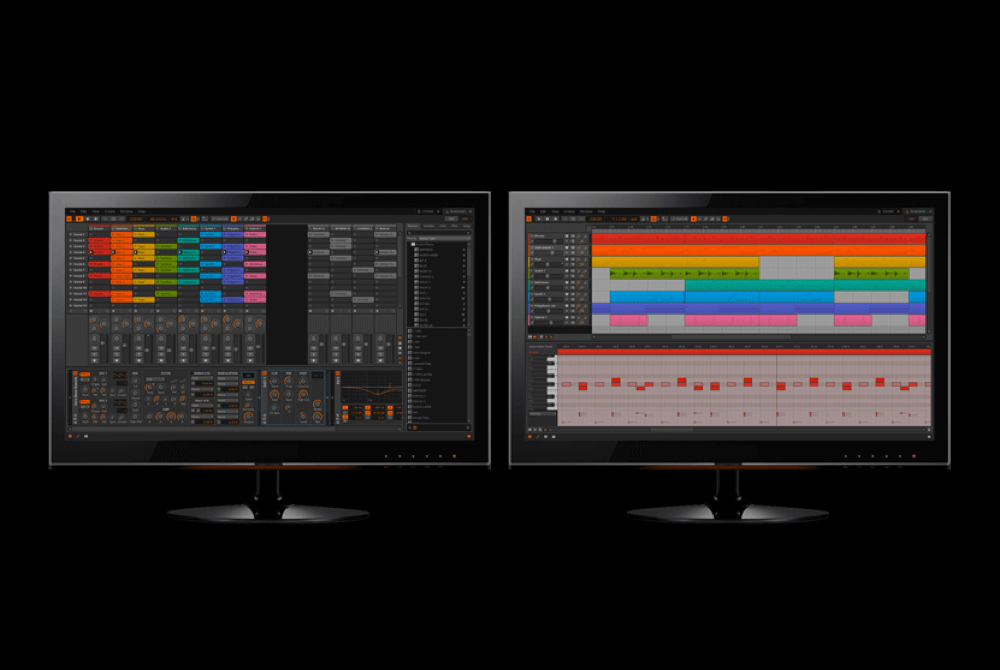

#BITWIG STUDIO VS ABLETON FULL#
This allows you to have, for example, an overview of the full project on one monitor and select tracks or clips for editing on another. The workflow feels similarly refined, with three main views (Arrange, Mix and Edit) that can span up to three monitors by way of user-configurable display profiles. Although tastes will vary, Bitwig Studio's UI is fairly sleek and modern, landing somewhere between Logic and Ableton on the surface. The first thing you'll notice is the user interface.

As a longtime Ableton Live user, I was interested to see what was left to really set it apart from all of the DAW options out there, especially its obvious inspiration. On March 26th, Bitwig finally emerged from a lengthy beta phase and was released into the wild. Live 9 was released, beating Bitwig to the punch on some of the features they'd touted in that early reveal, like dual screen support and session view automation. Two years on, much has happened in the world of music tech. A short video and accompanying press release was all we got back then, but that was enough for more than a few people to preemptively declare Bitwig to be the future king of DAWs. The development team was rumored to include more than one former Ableton programmer, and Bitwig appeared to improve on many of the core constructs that made Live such a huge success. It's hard to believe that it's been over two years since Bitwig Studio was originally announced.Launchpad controller support from DrivenByMoss - I seriously considered getting Ableton and Push 2, but a very similar experience is possible with a Launchpad and Bitwig using Moss’ scripts, and overall price is significantly lower.Development velocity feels fast – maybe this is subjective, but I get the feeling that Ableton and many of the older competitors are starting to struggle to introduce huge new features, since their codebases are getting more mature and it’s harder to steer a giant ship like that.To this day, most of my plugin purchases are sampled instruments like Felt’s Lekko piano, etc., where I just don’t have the patience to multisample an upright as meticulously as they do Sound design/ease of modulation/the grid - Bitwig was the only DAW that felt like I didn’t need a small army of VSTs to do deep sound design of my own custom synths.But I did spend a lot of time demoing major options (Ableton, FL, Reaper, S1, Logic) and ultimately arrived at Bitwig for a few reasons: I definitely wish there was a good FOSS DAW out there as well, but I’m not holding my breath.Īs far as the original question goes, I can’t speak to Ableton from the perspective of a long-time user as Bitwig was my final decision when picking a DAW.
#BITWIG STUDIO VS ABLETON SOFTWARE#
It’s an insanely hard problem - and that’s why software teams get paid well, and that’s why DAWs cost so much money If you look around the FOSS world you’ll see a lot of software that either: 1) has tons of features but is practically unusable (no interface, shitty interface, etc.) or 2) has relatively few features, but is free, accessible and very easy to use (like audacity).ĭoing both is like hitting the FOSS jackpot, and it unfortunately doesn’t happen often It takes a ton of talent, dedication, and consistency of vision to deliver a high quality piece of software that has a huge depth of features and is still usable in terms of UI, UX patterns/consistency, etc. There are some notable really notable examples of software for creative enterprises that is FOSS and full-featured enough to be a direct competitor to bigger, proprietary competitors (Krita and GIMP come to mind), but the reality is that 9 times out of 10, the FOSS solution will look more like Audacity than it will look like Krita. I think Audacity is what you get when the FOSS community develops a DAW.


 0 kommentar(er)
0 kommentar(er)
